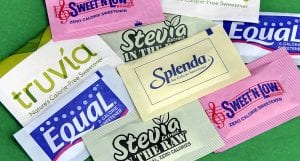With worldwide obesity rates doubling in the past three decades, there has been a great deal of focus on trying to find ways to reduce the amount of sugar in our diets. You might think that weight management is more of an issue for a health club than a chiropractic clinic, but in fact weight gain is one of the most common contributory factors to back pain, and especially lower back pain.
Weight gain and lower back pain
Technically speaking, the whole idea of “weight gain” being a problem is an oversimplification. Today, we tend to use the word “weight” when talking about our bodies – what we are really talking about here is excess body fat, which stresses the spine, as opposed to muscle, which actually weighs more than fat and of course should help to support the spine. Indeed, recent research seems to indicate that not all weight gain is linked with a bolstered risk of back pain – According to a new study, only fat gain triggers back pain. On the other hand, a gain of lean body tissue, such as muscle does not appear to heighten the risk.[1]
We should, therefore, think about reducing fat gain, and one of the best ways to do this is to reduce sugar in the diet – but are sugar substitutes the right choice here? Let’s look at some common options:
Aspartame
Like many such substances, this sugar substitute was discovered in 1965 by accident while chemist James Schlatter was testing an anti-ulcer drug.[2] Aspartame gained FDA approval in 1981 and was approved in 1983 for use in carbonated beverages, where it is most commonly found now as the primary sweetener for most diet sodas.
Today, Aspartame has gained a rather shady reputation and accounts for over 75 per cent of the adverse reactions to food additives reported to the FDA. It has also been linked to serious medical reactions.[3] Researchers and physicians studying these reactions have concluded that the following chronic illnesses can worsen when ingesting aspartame: brain tumours, multiple sclerosis, epilepsy, chronic fatigue syndrome, Parkinson’s disease, Alzheimer’s, mental retardation, lymphoma, birth defects, fibromyalgia, and diabetes.[4]
Many of us are now choosing to avoid aspartame in the diet, and many manufacturers are starting to replace it. However, it is still commonly found in over 6,000 food items on grocery store shelves, many of which you would never expect to contain it: yoghurt, chewing gum, energy bars, gelatin snacks and more.[5] We would recommend you avoid it!
Splenda
While Splenda has been fairly heavily marketed over the last few years, its also not a new creation – it was originally discovered in 1976[6] Many forms of Splenda are advertised as a sugar derivative, rather than a chemical formula – and while this is technically true, the process used to create Splenda is still highly complex and far from what we would think of as a “natural” approach.
While Splenda is “made” from sugar, the final product is ultimately in a format which the body simply does not know how to handle – so it tastes sweet, but then what? Manufacturers claim that Splenda is not digested or metabolized by the body, so it has no calories – but the latest research suggests that up to 15 per cent of sucralose is in fact absorbed in the digestive system and into fat cells.[7]
Splenda might, therefore, mean fewer calories are absorbed by the body – but any other effects are still unclear.
Agave sweetener
Agave-based sugar substitutes are made from the same plant as tequila – and while most people assume that it’s a concentrated form of the sap, in fact, it’s usually made from the pineapple-like root bulb, using a process very similar to how corn-starch is converted to high-fructose corn syrup.
Once processed, agave has such a high fructose content that it’s almost as bad for your body as high-fructose corn syrup. Although agave has become popular in the past few years as a “natural” sweetener – using the sap directly would certainly qualify in this sense, but chemically processing the root is less clear cut.[8]
Sweet & Low
If you’ve ever been to a restaurant you’ll be familiar with Sweet and Low – Discovered in 1879 by researchers at Johns Hopkins University, saccharin, the active ingredient, appeared to be a miracle substance, as it sweetened foods without causing a glucose reaction – in theory, a great option for diabetics. After World War II and into the 1960s, when interest in weight control developed, saccharin became even more popular.[9]
It was only a short time later that saccharin became a health concern, and a 1977 study determined that it was causing cancer in lab mice. This resulted in a cancer warning being added to all items that contained this chemically produced sweetener. However, recent studies have been published claiming those lab results were inaccurate or overexaggerated, and suddenly saccharin has been deemed “safe.”[10]
According to a report written in 1997 by the Center for the Science in Public Interest (CSPI), removing saccharin from the list of potential carcinogens is a mistake; the main concern is that doing so gives the public a “false sense of security.” The CSPI report states, “If saccharin is even a weak carcinogen, this unnecessary additive would pose an intolerable risk to the public.”
Quite aside from this, trying to find sweeteners which do not aggrieve diabetes is surely not the best approach when we could instead be focusing on preventing, treating and in some cases even reversing diabetes itself. Much like taking painkillers to drown out pain, going with sweet and low or any other Saccharin product is just covering up the real issue.
Stevia and other natural sweeteners
More recently there has been significant interest in so-called “natural” sweeteners – the most popular is probably stevia. Stevia and other natural, non-processed alternatives to sugar tend to be more expensive, but are also the most natural of all low-calorie sweeteners and almost certainly the safest.
Stevia itself is a plant found in South America and has been used in Paraguay for centuries and Japan for decades, as such it’s been “field tested” for quite some time. As with all sweeteners, the difference is where and how it’s produced. While some branded stevia products are chemically manipulated and processed, it is possible to buy genuine natural stevia which seems to be a genuinely low-calorie way to add sweetness to food. If you’re looking for a sugar alternative, this is the only option we recommend!
Time to ditch the sweeteners?
In an ideal world, we’d ditch sugar and sweeteners altogether – after all, our ancestors did just fine without it! For most of us though this would reduce our enjoyment of food, so a more sensible option is just to control out the use of sugar and sweeteners, and to balance food with exercise.
If you’re just starting out on a weight reduction program – chiropractic can help! Not only can your chiropractor give good nutritional advice, but getting a chiropractic checkup can help to keep your body working at top form, meaning that you don’t have additional pain and strain slowing you down a preventing you from exercising.
Need some advice? Just get in touch today!
[1] Euro J Spine 201 1;36:I 320-5
[2] Lewis R. Discovery: Windows on the Life Sciences.
Oxford: Blackwell Science, 2001
[3] Docket # 02P-0317: Recall Aspartame as a Neurotoxic Drug:
Food and Drug Administration; summary by Mark Gold of the Aspartame Toxicity Information Center, Jan. 12, 2003
[4] Articles on aspartame
http://aspartame.mercola.com
[5] Aspartame. New World Encyclopedia
www.newworldencyclopedia.org/entry/Aspartame
[6] Fact Sheet on Sucralose. Data reviewed by the American Dietetic Association’s Fact Sheet Review Board.
www.sucralose.org/pdf/ADAFactSheet_FINAL.pdf
[7] The ‘Other’ Sweetener That’s Made From Sugar, But Is Closer to DDT.”
Mercola.com, April 26, 2011
[8] Morell SF, Nagel R.
Agave Nectar: Worse Than We Thought
Weston A. Price Foundation, April 30, 2009
[9] History of Saccharin. The Calorie Control Council:
www.saccharin.org/history.html
[10] Saccharin Still Poses Cancer Risk, Scientists Tell Federal Agency
Center for Science in the Public Interest, Oct. 28, 1997



